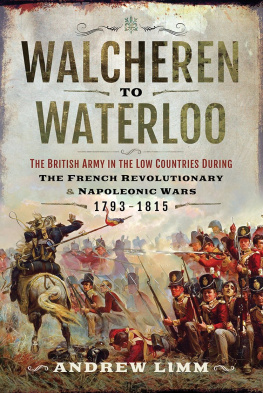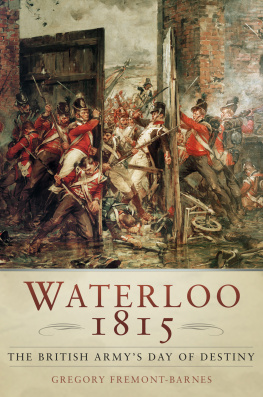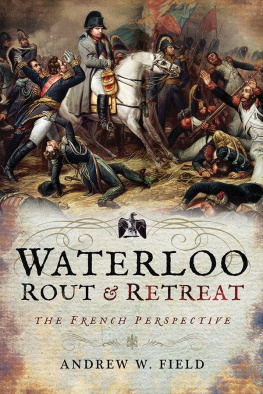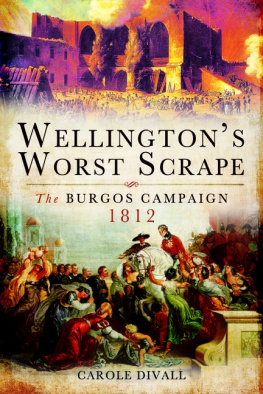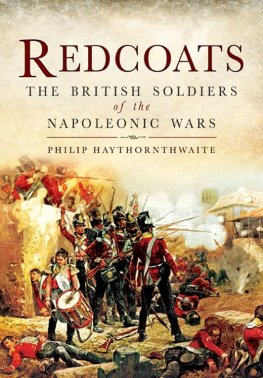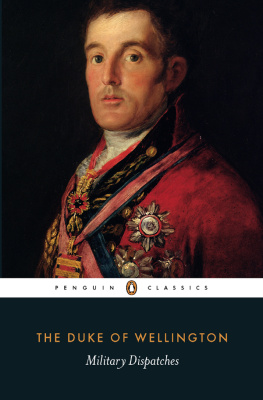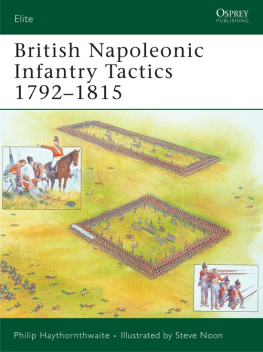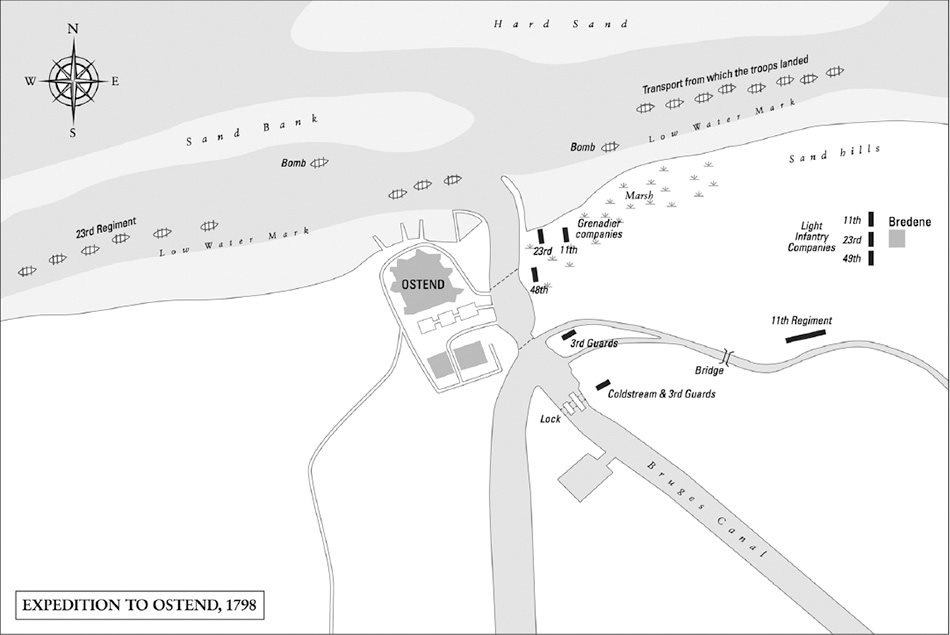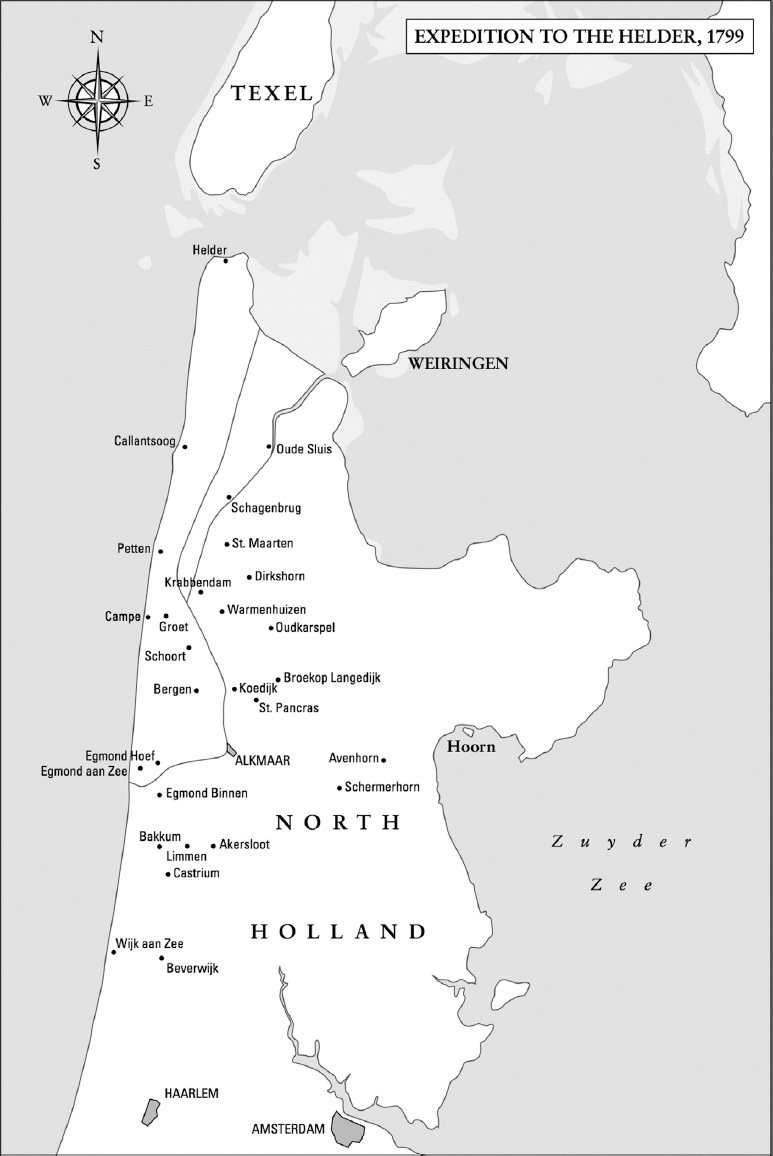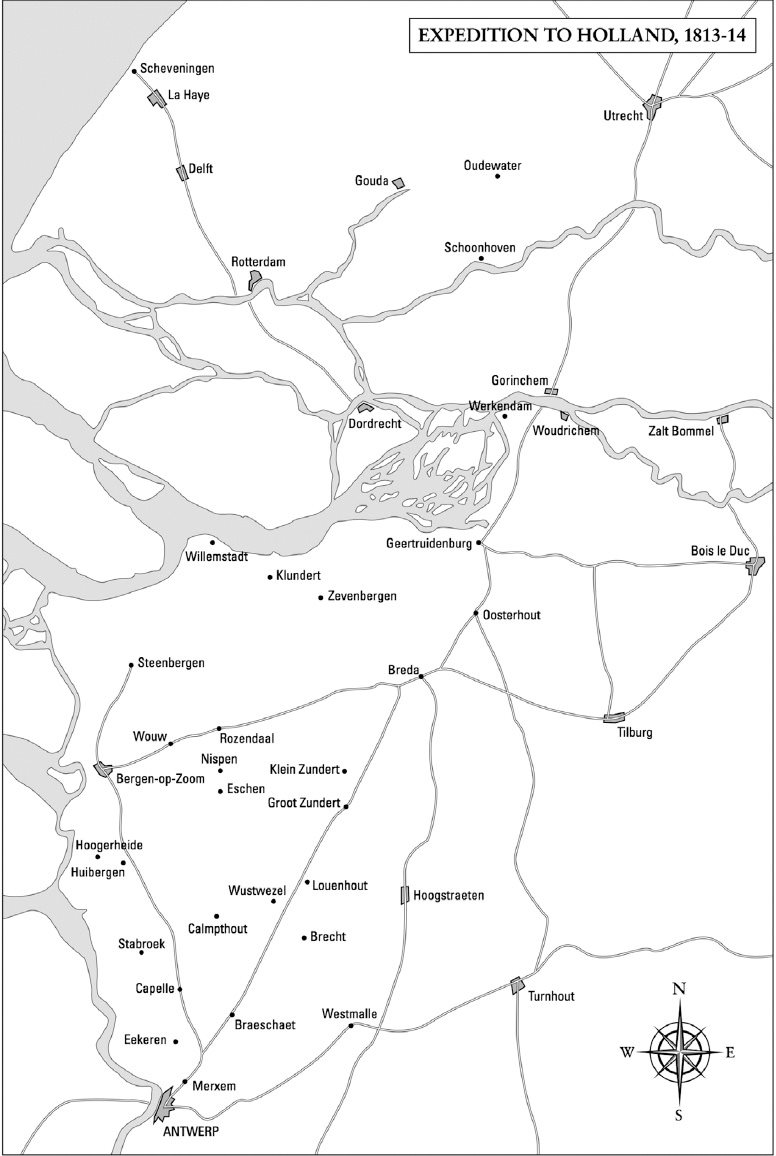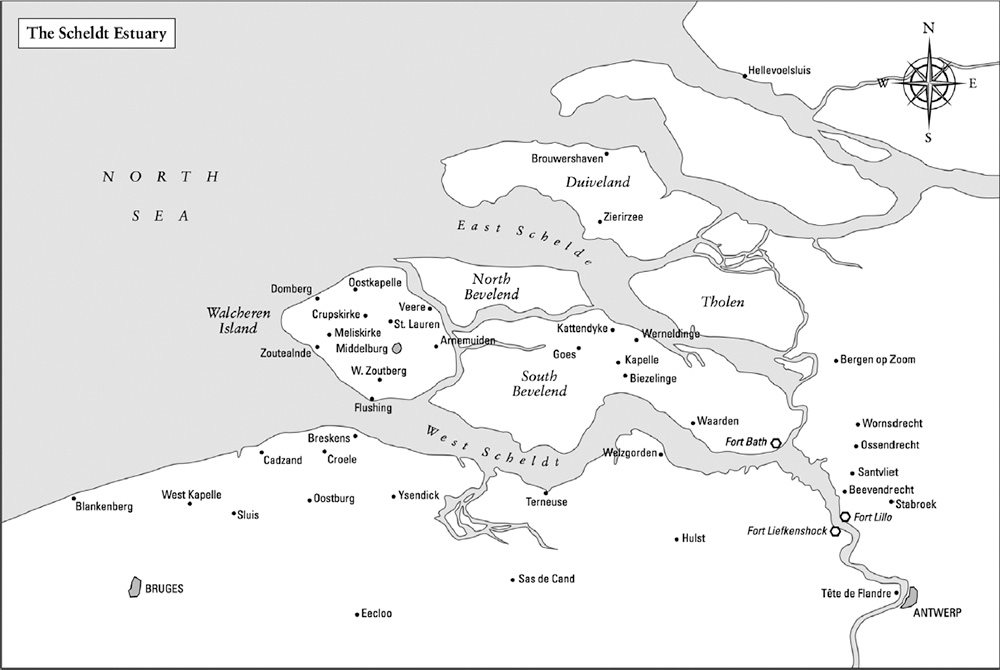Flesh and Steel during the Great War

Walcheren to Waterloo
Walcheren to Waterloo
The British Army in the Low Countries during the French Revolutionary and Napoleonic Wars 17931815
Andrew Limm
First published in Great Britain in 2018 by
Pen & Sword Military
an imprint of
Pen & Sword Books Ltd
47 Church Street
Barnsley
South Yorkshire
S70 2AS
Copyright (c) Andrew Limm 2018
ISBN 978-1-47387-468-8
eISBN 978-1-47387-470-1
Mobi 978-1-4-7387-469-5
The right of Andrew Limm to be identified as Author of this Work has been asserted by him in accordance with the Copyright, Designs and Patents Act 1988.
All rights reserved. No part of this book may be reproduced or transmitted in any form or by any means, electronic or mechanical including photocopying, recording or by any information storage and retrieval system, without permission from the Publisher in writing.
Pen & Sword Books Ltd incorporates the imprints of Pen & Sword Archaeology, Atlas, Aviation, Battleground, Discovery, Family History, History, Maritime, Military, Naval, Politics, Railways, Select, Social History, Transport, True Crime, and Claymore Press, Frontline Books, Leo Cooper, Praetorian Press, Remember When, Seaforth Publishing and Wharncliffe.
For a complete list of Pen & Sword titles please contact
PEN & SWORD BOOKS LIMITED
47 Church Street, Barnsley, South Yorkshire, S70 2AS, England
E-mail:
Website: www.pen-and-sword.co.uk
Acknowledgements
This book is dedicated to my wife Reena whose love and support has been instrumental in the completion of this study.
I would like to thank my parents, Peter and Catharine, for their encouragement and guidance.
My thanks must also go to Professor Michael Snape, Professor Jeremy Black, Professor Bruce Collins, Professor Gary Sheffield, Dr Daniel Whittingham, Dr Armin Grnbacher and Dr Huw Davies for their valuable insights during my research.
Finally, I would like to thank the editorial team at Pen & Sword for their efforts in seeing the book through to publication.
Andrew Limm, May 2018
Abbreviations
| AG | Adjutant General |
| AHR | American Historical Review |
| BCMH | British Commission for Military History |
| BMJ | British Medical Journal |
| C-in-C | Commander-in-Chief |
| EHR | English Historical Review |
| EJIR | European Journal of International Relations |
| HJ | The Historical Journal |
| HLQ | Huntington Library Quarterly |
| IHR | International History Review |
| JBS | Quarterly Journal of British Studies |
| JCH | Journal of Contemporary History |
| JMH | Journal of Modern History |
| JMHS | Journal of Military History Society |
| JSAHR | Journal of the Society for Army Historical Research |
| JSS | Journal of Strategic Studies |
| MPH | War Office Maps and Plans extracted to flat storage |
| PP | Parliamentary Papers |
| RUSI | Royal United Service Institute Journal |
| QMG | Quartermaster General |
| WMQ | William and Mary Quarterly |
Maps
Introduction
This study evaluates the performance of the British army in the French Revolutionary and Napoleonic wars with specific reference to four of its campaigns in the Low Countries between 1793 and 1814. In doing so it provides a critique of the current view that, following the reforms of the Duke of York (17951809), the British army was transformed into a well-led and efficient fighting force. The campaigns studied are Yorks expedition to Flanders in 1793; the Anglo-Russian expedition to Holland in 1799; the expedition to the island of Walcheren in 1809; and Sir Thomas Grahams expedition to Bergen-Op-Zoom in 181314.
During the period 1793 to 1815 the protection of the Low Countries from France was the overriding objective of British foreign policy. This originated from the British fear of an invasion being launched from the Low Countries by an aggressive foreign power as had happened in 1688.
Throughout the eighteenth century the British had committed their military forces to safeguard their interests in the Low Countries and protect the region from French aggression; a prime example being the Duke of Marlboroughs campaigns in the Low Counties in 17058.
Naval considerations were also important and the British were fixated with the need to ensure a hostile power did not achieve dominance over the ports of Ostend, Flushing and Antwerp on the Flanders and Dutch coasts. If a French army had landed on the Kent or Suffolk coastline Britains very survival as an independent nation would have been under threat. At the same time, however, a successful British intervention in the Low Countries, with Allied support, had the potential to threaten the foundations of French power in Northern Europe and the French frontier.
Between 1793 and 1814 six major British expeditions were sent to the Low Countries but, despite high expectations of military success, each ended in disaster. Moreover, despite the fact that historians have agreed that the Low Countries were vital to British interests, none has sought to undertake a comparative study of these campaigns or to provide an explanation for the poor British military record during these years. This book sets out to redress this imbalance, provide a new evaluation of British strategic thinking regarding the Low Countries, and re-evaluate the fighting qualities of the British army in the French Revolutionary and Napoleonic Wars with reference to its performance in the Low Countries between 1793 and 1815.
Historiography
The British army in the French Revolutionary and Napoleonic Wars has always been a popular topic for historians. However, as Michael Howard has pointed out, wider changes in the nature of military history have altered how historians have written about the British army. Gone are the days when to write about military history was to devote ones time solely to the study of battles and the creation of heroic national myths. This parochial approach has been largely superseded by the New Military History, with its increasingly inter-disciplinary perspective on War and Society encompassing international relations, the social sciences, anthropology, gender and media studies as well as revising aspects of economic, political and constitutional history.
Although these studies have added much needed diversity and breadth to the history of the British army, exponents of this New Military History have not sufficiently challenged the existing views of older generations of military historians. Furthermore, instead of developing a unique approach of their own, advocates of the New Military History have sought instead to borrow ideas and theories from other historical fields. As one historian has noted, The Army, has become, a test subject for a variety of different theoretical schools.

